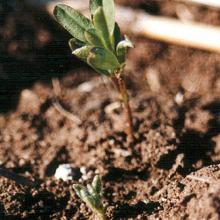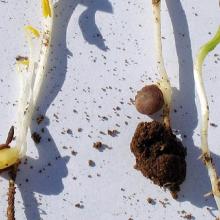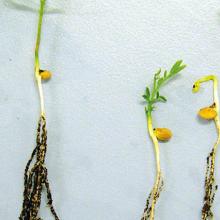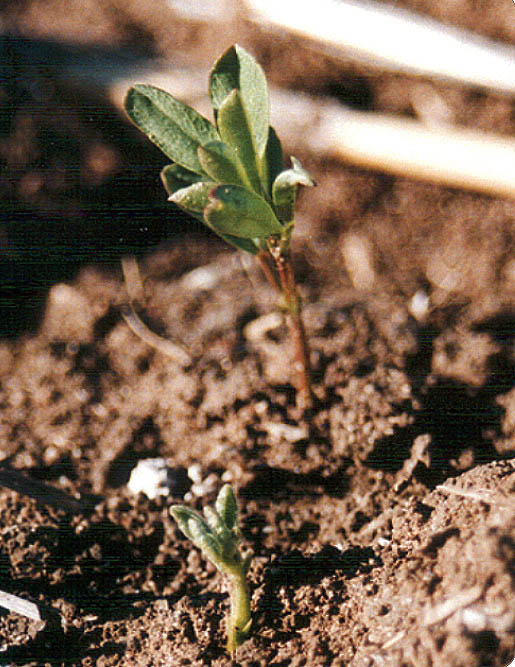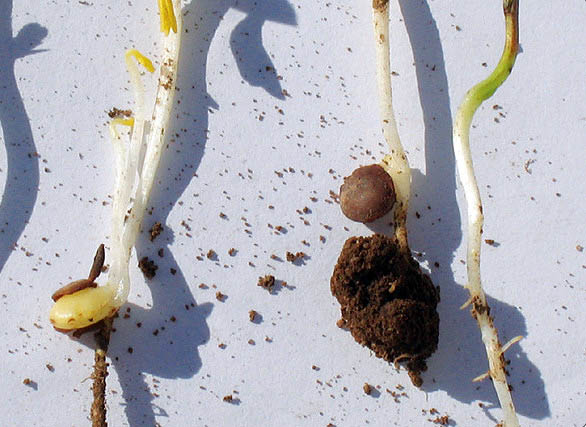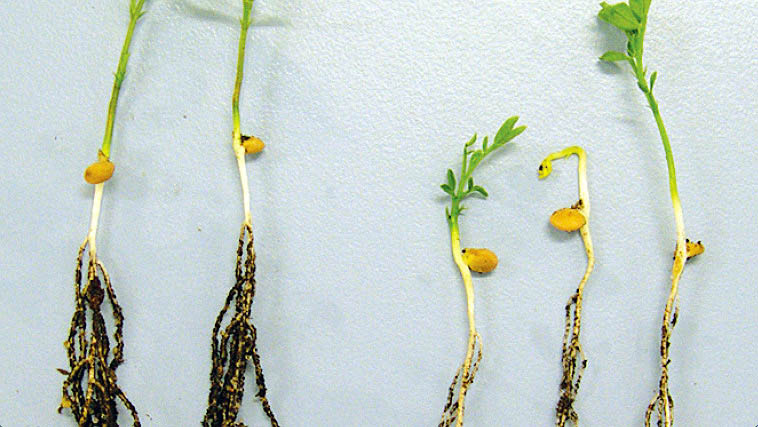Group D
Inhibitors of Cell Division (by inhibiting tubulin formation)
|
Dinitro-anilines |
Benzamides |
||
|---|---|---|---|
|
Trade name |
Chemical name |
Trade name |
Chemical name |
|
Stomp® |
pendimethalin |
Kerb® |
propyzamide |
|
Trifluralin®/Treflan® |
trifluralin |
|
|
|
Yield® |
trifluralin + oryzalin |
||
Avoid sowing seed into the layer of herbicide treated soil. This often occurs from the seeder set-up resulting in variable depth of sowing, or from sowing too fast throwing herbicide treated soil onto adjacent furrows.
Symptoms are often worse when wet cold conditions slow germination and emergence.
Visual symptoms appear as the crop emerges with intermittent emergence along drill rows as a result of the shortening and thickening of the hypocotyl.
Lentils are the most sensitive pulse crop to Group D herbicides. Seeds germinate, but shoots are unable to emerge. Emerging leaves in affected plants are twisted and distorted.
Roots can be shortened and thickened.
M Materne, VDPI; I Koch, J & D Southwoods
 Skip to main content
Skip to main content
